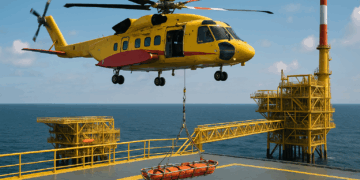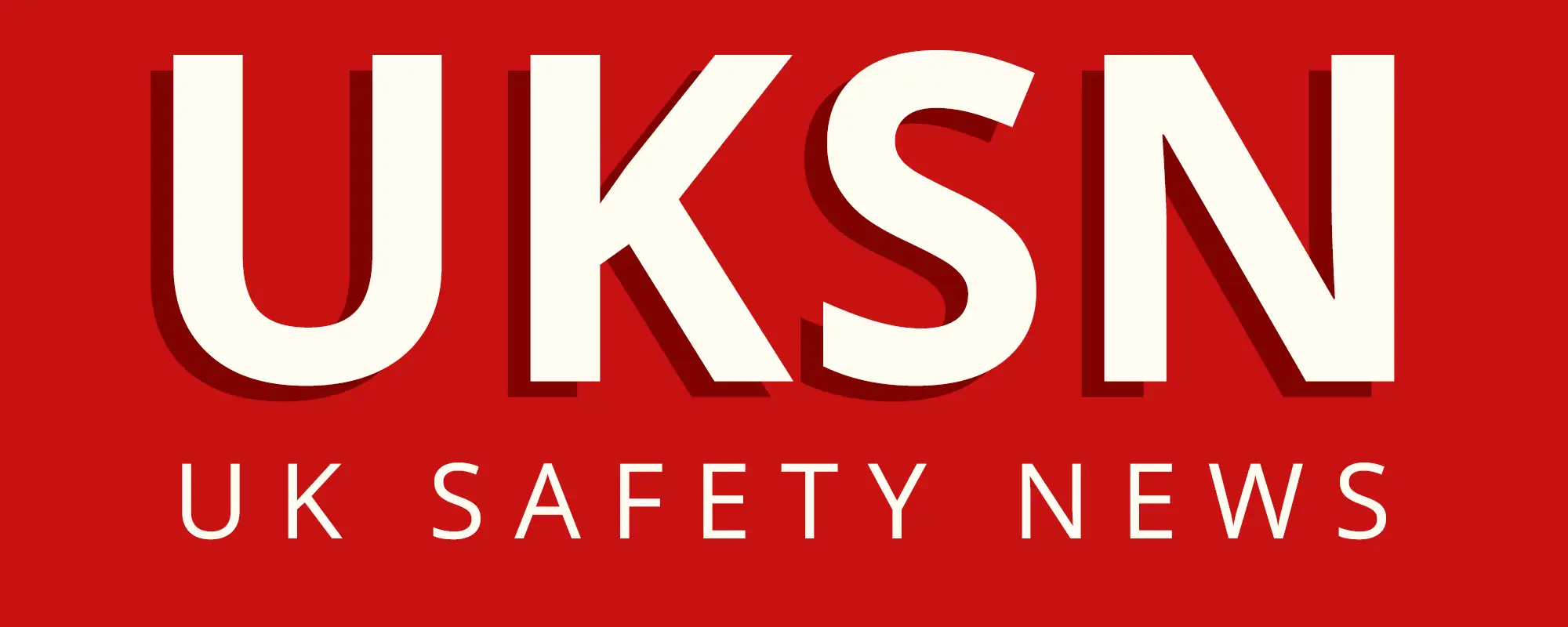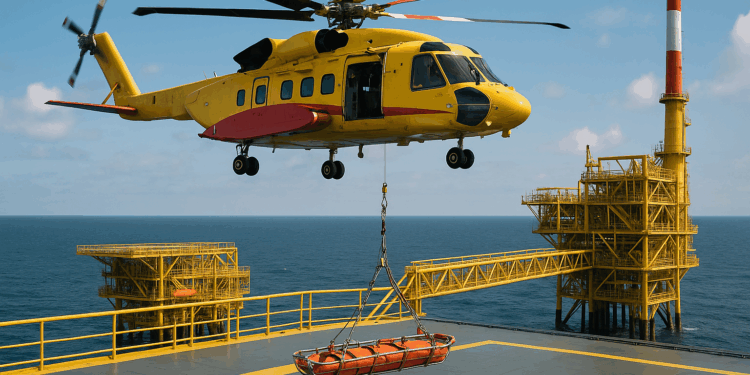Story Highlight
– New weight limit for rig workers set at 124.7kg.
– Rule effective by November 2026 for safety reasons.
– About 5,000 workers may need to adjust weight.
– Employers urged to support weight-management for workers.
– Focus on holistic health, avoiding stigma around weight.
Full Story
New safety regulations set by Offshore Energies UK (OEUK) will require workers on oil and gas rigs in the North Sea to weigh no more than 124.7kg when fully dressed. This new weight restriction aims to facilitate the safe winching of personnel during medical emergencies using rescue helicopters. The regulations are scheduled to be implemented by November 2026.
The 124.7kg limit will contribute to an overall maximum load of 249kg for helicopter operations, which also includes the average rescue worker’s weight of approximately 90.3kg, a stretcher weighing 29kg, and an additional 5kg for the necessary equipment. OEUK anticipates that around 5,000 offshore workers may need to adjust to this threshold; however, it is believed that most individuals will be able to comply by managing their weight gradually.
The introduction of these new guidelines will proceed in stages, starting with an awareness phase set to run from November 2025 until January 2026. This will be followed by a transition period, allowing workers time to adjust to the expected changes. Full enforcement of the rule is slated to commence in November 2026, when those unable to meet the weight requirement will not be allowed to work offshore.
To assist with this transition, OEUK has called on employers to provide adequate support for weight management and overall wellbeing, aiming to help workers successfully adhere to the new standards. Graham Skinner, health and safety manager at OEUK, stated: “Our phased introduction ensures that no workers are put at risk of losing their jobs, providing sufficient time for healthy and sustainable weight management.”
Skinner acknowledged the personal nature of weight loss, identifying various influencing factors. In alignment with OEUK’s guidelines, he emphasised the importance of offering a diverse range of support and resources to employees seeking to lose weight. He also encouraged companies to actively listen to their workforce and support grassroots initiatives, which may prove to be more effective and empower workers in their weight management journey.
Cecilia Hellström, the workplace wellbeing director at the nutrition and food tracking application Lifesum, echoed these sentiments. She noted, “Employers have a duty to ensure workplace safety while supporting employee health in a holistic and inclusive way.” Hellström further elaborated that human resources professionals can constructively assist employees by providing access to guidance and resources rather than imposing punitive measures when weight management becomes relevant to job specifications.
Emphasising that weight should be viewed as one factor of overall health, Hellström suggested that businesses should facilitate employee access to comprehensive nutritional education, wellness applications, healthy catering options, and tailored wellbeing programmes. She urged that policies should focus on inclusivity and flexibility and take personal circumstances into account. By fostering a culture of open communication and offering confidential support, employers can encourage sustainable changes in their employees’ health.
Hellström stressed the importance of prioritising long-term health and resilience over short-term compliance and targets.
Bernard Yew, medical director at workplace wellbeing provider PAM Group, advised a broader focus when addressing workplace health and wellbeing. He suggested that organisations should launch comprehensive initiatives encouraging employees to explore meaningful ways to enhance their overall wellbeing. This could feature programmes aimed at improving dietary habits, increasing physical activity, or providing emotional support to tackle issues that can lead to overeating.
He stated, “Most people want to be a healthy weight but struggle due to the perception that healthy eating requires cooking from scratch with expensive ingredients every night.” Yew recommended that employers assist their staff in achieving healthier eating habits by promoting proper lunch breaks and offering nutritional advice.
In a similar vein, Ellie Hickman, nutrition specialist at health and wellbeing provider HCML, proposed reframing the conversation around weight management. Instead of centring discussions on weight, she advocated for a holistic approach that focuses on employee health and happiness. Hickman suggested that employers could provide a variety of support options that include one-on-one consultations or general webinars, allowing for broader participation while making employees feel comfortable.
She advocated for a multi-modal approach that encourages nutrition education alongside increased physical activity, stress management, and improved sleep hygiene as the most effective strategy for achieving overall wellbeing.
Yew reiterated the critical importance of ensuring that any weight-related workplace policies are not discriminatory and have a clear justification linked to health and safety. This underscores the need for a supportive environment where employees feel valued and motivated to pursue healthier lifestyles, free from stigma and personal bias.
As the industry prepares for these impending regulations, it is evident that the conversation around weight management in the workplace is evolving. With emphasis on support and individual wellbeing, the focus is likely to shift towards creating a healthier workforce while maintaining the necessary safety standards for offshore operations.
































This is a sensible safety measure that recognises the real challenges of aeromedical evacuation. Employers should take a constructive role by offering confidential health support, tailored fitness and nutrition programmes, and sensible shift patterns that enable employees to make sustainable changes. Clear communication and alternate roles for those making transitions will help maintain morale and avoid stigma. Regulatory change works best when backed by practical workplace support and fair implementation.
This is a sensible safety measure that recognises the real challenges of conducting medical evacuations by helicopter. Employers should be proactive in supporting affected staff through confidential health and wellbeing programmes, access to occupational health services and practical adjustments where possible. Clear communication, non judgemental support and reasonable timelines for implementation will help maintain morale while improving emergency response safety.
This change is a practical step to reduce risk during emergency evacuations and makes clear the need for proactive workforce health management. Employers should use this time to expand access to tailored health support including nutrition, physical activity, mental health services and regular medical screening. Transparent communication and confidentiality will be vital to avoid stigma and ensure workers engage with help early. Operational plans also need review so that transfer and rescue procedures, equipment and training match the new requirement. Supporting affected employees with reasonable adjustments, clear timelines and a focus on positive wellbeing outcomes will deliver safer operations and a more resilient workforce.